Health Benefits of Rosemary

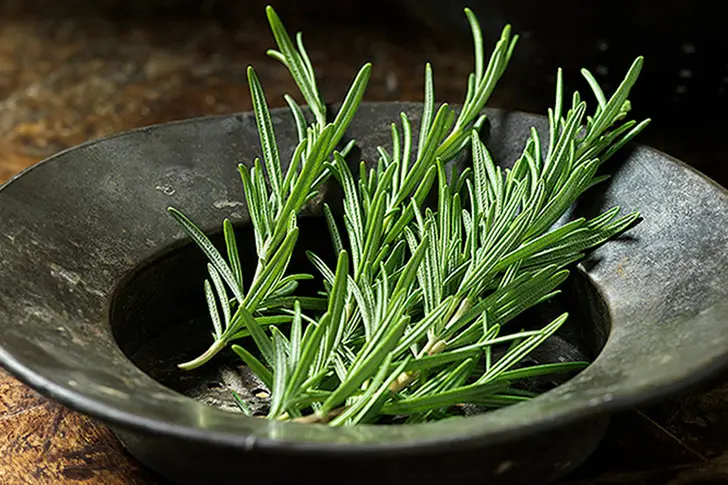
An Herb with Powerful Benefits
Rosemary is more than just a flavorful herb for cooking. This aromatic plant, native to the Mediterranean region, has been used for centuries in traditional medicine. Modern research suggests that rosemary may offer a range of health benefits, from improving memory to potentially reducing cancer risk.
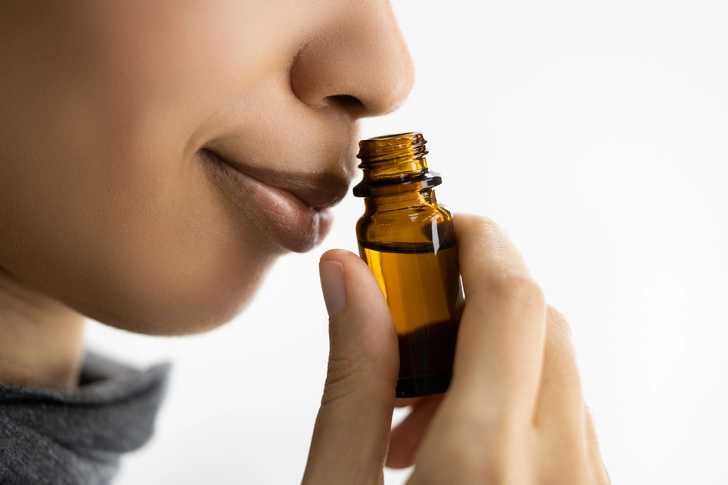
Boosting Brain Power
Rosemary has long been associated with memory improvement. Studies suggest that the aroma of rosemary oil may enhance cognitive performance, particularly in areas of speed and accuracy. The herb contains an ingredient called carnosic acid, which may help protect the brain from free radical damage and improve blood circulation. Some research indicates that rosemary might even play a role in preventing brain aging and protecting against neurodegenerative diseases.
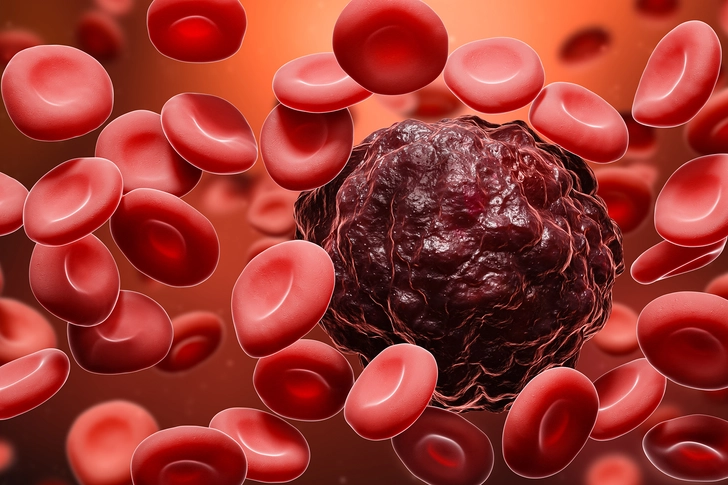
Fighting Cancer with Antioxidants
Rosemary is rich in antioxidants and anti-inflammatory compounds, which may help protect cells from damage by free radicals. These properties could potentially lower the risk of cancer. While more research is needed, some studies have found that carnosic acid can slow the growth of cancer cells in the body and even lower the risk of developing tumors. It's important to note that these studies are preliminary, and rosemary should not replace conventional cancer treatments.
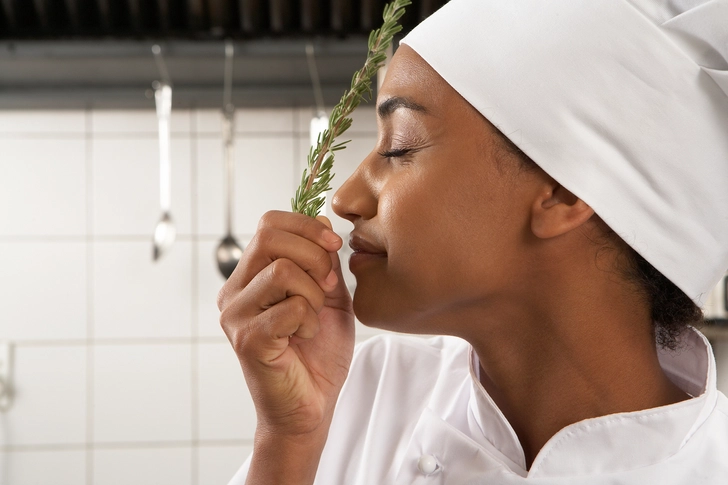
Strengthening Your Immune System
The antioxidants in rosemary, including rosmarinic acid and carnosic acid, may help boost your immune system. These compounds can help fight off free radicals that can damage cells and lead to various health issues. Additionally, rosemary has antimicrobial properties that may help your body fight off bacterial infections.
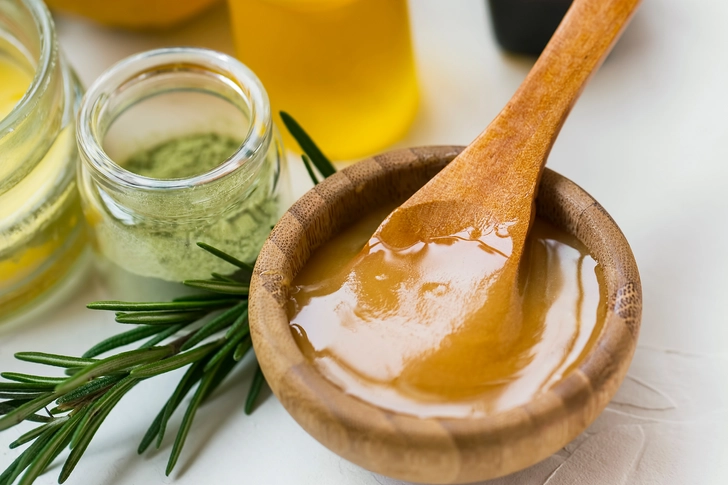
Stress Relief and Mental Well-being
Rosemary has been shown to have a positive effect on mood and stress levels. The scent of rosemary may help reduce levels of cortisol, a stress hormone, in your saliva. Some studies suggest that rosemary aromatherapy can decrease anxiety and improve the quality of memory. While more research is needed, incorporating rosemary into your environment through essential oils or fresh sprigs might help create a more relaxing atmosphere.
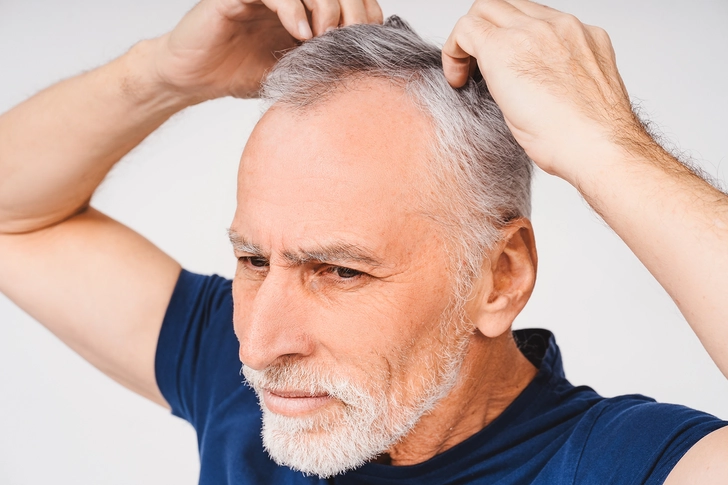
Potential Aid for Hair Growth
Some studies suggest that rosemary oil may help with hair growth. Rosemary seems to increase blood circulation when applied to the scalp, which might help hair follicles grow. In one study, rosemary oil performed as well as 2% minoxidil, a common hair regrowth treatment, in regrowing hair. And it was less likely to cause an itchy scalp.

Nutritional Benefits of Rosemary
Rosemary is not just flavorful; it's also nutritious. This herb is a good source of iron, calcium, and vitamin B6. It also contains compounds that may have anti-inflammatory and pain-relieving effects. While you typically wouldn't eat large quantities of rosemary, incorporating it regularly into your cooking can contribute to your overall nutrient intake. And it can be a great way to add flavor to dishes without extra calories or sodium.
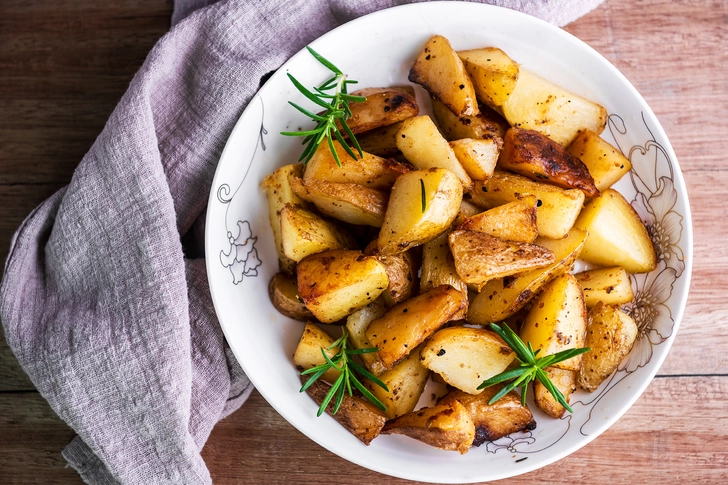
Adding Rosemary to Your Diet
There are many ways to include rosemary in your diet. Use fresh or dried rosemary in marinades for meats, add it to roasted vegetables, or infuse it in olive oil for a flavorful dressing. You can also make rosemary tea by steeping fresh rosemary sprigs in hot water. For a refreshing drink, add rosemary sprigs to water or lemonade.
PHOTO CREDENTIALS
S1 - Diana Miller
S2 - Andrey Popov | Dreamstime.com
S3 - MattL_Images
S4 - Goodshoot RF-Getty Images
S5 - marrakeshh - GettyImages
S6 - AYO Production
S7 - CentralITAlliance - ThinkStock
S8 - HUIZENG HU
SOURCES
AllRecipes: “Rosemary Recipes.”
American Pregnancy Association: “Herbs and Pregnancy.”
Avicenna Journal of Phytomedicine: “Effects of Rosmarinus officinalis and Platanus orientalis extracts on asthmatic subjects resistant to routine treatments.”
Complementary Therapies in Clinical Practice: “Effects of Rosmarinus officinalis L. on memory performance, anxiety, depression, and sleep quality in university students: A randomized clinical trial.”
Future Science OA: “Rosmarinus officinalis L.: an update review of its phytochemistry and biological activity.”
National Institutes of Health Office of Dietary Supplements: “Manganese.”
Nutrients: “Anticancer Effects of Rosemary (Rosmarinus officinalis L.) Extract and Rosemary Extract Polyphenols.”
The Spruce Eats: “Fresh Herb Infused Rosemary Oil.”
Therapeutic Advances in Psychopharmacology: “Plasma 1,8-cineole correlates with cognitive performance following exposure to rosemary essential oil aroma.”
Joshua Zeichner, MD, director of cosmetic and clinical research in dermatology and assistant professor of dermatology, Mount Sinai Medical Center, New York.
Department of Agriculture, Republic of South Africa: “Marula.”
American Academy of Dermatology: “Acne: Who Gets and Causes.”
Koh, K. British Journal of Dermatology, December 2002.
Enshaieh, S. Indian Journal of Dermatology, January-February 2007.
Bassett, I. Medical Journal of Australia, Oct. 15, 1990.
Bennani, H. Cancer Detection and Prevention, Dec. 13, 2006.
Ganceviciene, R. Dermato-Endocrinology, July 1, 2012.
Srivastava, J. Molecular Medicine Reports, Nov. 1, 2010.
Verallo-Rowell, V. Dermatitis, November-December 2008.
Agero, A. Dermatitis, September 2004.
Oregon State University Linus Pauling Institute: “Vitamin A and Skin Health.”
Panahi, Y. Skinmed, January-February 2015.
USDA National Nutrient Database: “Avocado Oil," "Olive Oil.”
Boukhatem MN, Kameli A, Ferhat MA, Saidi F, Mekarnia M. Rose geranium essential oil as a source of new and safe anti-inflammatory drugs. Libyan J Med. 2013 Oct 7;8:22520. View abstract.
Daniells S. AHPA takes '1st stand' on labeling of DMAA-geranium oil. Nutraingredients-usa.com, August 9, 2011. Available at: https://www.nutraingredients-usa.com/Industry/AHPA-takes-1st-stand-on-labeling-of-DMAA-geranium-oil. (Accessed 12 August 2011).
Electronic Code of Federal Regulations. Title 21. Part 182 -- Substances Generally Recognized As Safe. Available at: https://www.accessdata.fda.gov/scripts/cdrh/cfdocs/cfcfr/CFRSearch.cfm?CFRPart=182
Fang HJ, Su XL, Liu HY, et al. [Studies on the chemical components and anti-tumor action of the volatile oils from Pelargonium graveoleus]. Yao Hsueh Hsueh Pao 1989;24:366-71. View abstract.
Greenway FL, Frome BM, Engels TM. Temporary relief of postherpetic neuralgia pain with topical geranium oil. Am J Med 2003;115:586-7. View abstract.
Ibrahim MA, Sallem OW, Abdelhassib MR, Eldahshan OA. Potentiation of anti-Helicobacter pylori activity of clarithromycin by Pelargonium graveolens oil. Arab J Gastroenterol 2021;22(3):224-8. View abstract.
Lis-Balchin M, Buchbauer G, Hirtenlehner T, Resch M. Antimicrobial activity of Pelargonium essential oils added to a quiche filling as a model food system. Lett Appl Microbiol 1998;27:207-10. View abstract.
Pattnaik S, Subramanyam VR, Kole C. Antibacterial and antifungal activity of ten essential oils in vitro. Microbios 1996;86:237-46. View abstract.
Reh DD, Hur K, Merlo CA. Efficacy of a topical sesame/rose geranium oil compound in patients with hereditary hemorrhagic telangiectasia associated epistaxis. Laryngoscope. 2013 Apr;123(4):820-2. View abstract.
Starling S. Synthetic geranium substance raises ephedra-like red flags. Nutraingredients-use.com, May 11, 2010. Available at: https://www.nutraingredients-usa.com/Industry/Synthetic-geranium-substance-raises-ephedra-like-red-flags. (Accessed 12 August 2011).
Abe, F., Yamauchi, T., Nagao, T., Kinjo, J., Okabe, H., Higo, H., and Akahane, H. Ursolic acid as a trypanocidal constituent in rosemary. Biol Pharm Bull 2002;25(11):1485-1487. View abstract.
Adsersen, A., Gauguin, B., Gudiksen, L., and Jager, A. K. Screening of plants used in Danish folk medicine to treat memory dysfunction for acetylcholinesterase inhibitory activity. J Ethnopharmacol 4-6-2006;104(3):418-422. View abstract.
Aggarwal, B. B. and Shishodia, S. Suppression of the nuclear factor-kappaB activation pathway by spice-derived phytochemicals: reasoning for seasoning. Ann.N.Y Acad.Sci. 2004;1030:434-441. View abstract.
al Hader, A. A., Hasan, Z. A., and Aqel, M. B. Hyperglycemic and insulin release inhibitory effects of Rosmarinus officinalis. J Ethnopharmacol 7-22-1994;43(3):217-221. View abstract.
al Sereiti, M. R., Abu-Amer, K. M., and Sen, P. Pharmacology of rosemary (Rosmarinus officinalis Linn.) and its therapeutic potentials. Indian J Exp Biol 1999;37(2):124-130. View abstract.
Angioni, A., Barra, A., Cereti, E., Barile, D., Coisson, J. D., Arlorio, M., Dessi, S., Coroneo, V., and Cabras, P. chemical composition, plant genetic differences, antimicrobial and antifungal activity investigation of the essential oil of Rosmarinus officinalis L. J Agric.Food Chem 6-2-2004;52(11):3530-3535. View abstract.
Aruoma, O. I. Antioxidant actions of plant foods: use of oxidative DNA damage as a tool for studying antioxidant efficacy. Free Radic.Res 1999;30(6):419-427. View abstract.
Aruoma, O. I., Halliwell, B., Aeschbach, R., and Loligers, J. Antioxidant and pro-oxidant properties of active rosemary constituents: carnosol and carnosic acid. Xenobiotica 1992;22(2):257-268. View abstract.
Bakirel, T., Bakirel, U., Keles, O. U., Ulgen, S. G., and Yardibi, H. In vivo assessment of antidiabetic and antioxidant activities of rosemary (Rosmarinus officinalis) in alloxan-diabetic rabbits. J Ethnopharmacol 2-28-2008;116(1):64-73. View abstract.
Baylac, S. and Racine, P. Inhibition of human leukocyte elastase by natural fragrant extracts of aromatic plants. Int J Aromatherapy 2004;14(4):179-182.
Cervellati, R., Renzulli, C., Guerra, M. C., and Speroni, E. Evaluation of antioxidant activity of some natural polyphenolic compounds using the Briggs-Rauscher reaction method. J Agric.Food Chem. 12-18-2002;50(26):7504-7509. View abstract.
Cheung, S. and Tai, J. Anti-proliferative and antioxidant properties of rosemary Rosmarinus officinalis. Oncol.Rep. 2007;17(6):1525-1531. View abstract.
Chohan, M., Forster-Wilkins, G., and Opara, E. I. Determination of the antioxidant capacity of culinary herbs subjected to various cooking and storage processes using the ABTS(*+) radical cation assay. Plant Foods Hum.Nutr. 2008;63(2):47-52. View abstract.
Dragan, S., Nicola, T., Ilina, R., Ursoniu, S., Kimar, A., Nimade, S., and Nicola, T. Role of multi-component functional foods in the complex treatment of patients with advanced breast cancer. Rev.Med.Chir Soc.Med.Nat.Iasi 2007;111(4):877-884. View abstract.
Elgayyar, M., Draughon, F. A., Golden, D. A., and Mount, J. R. Antimicrobial activity of essential oils from plants against selected pathogenic and saprophytic microorganisms. J Food Prot. 2001;64(7):1019-1024. View abstract.
Erenmemisoglu, A., Saraymen, R., and Ustun, S. Effect of a Rosmarinus officinalis leave extract on plasma glucose levels in normoglycaemic and diabetic mice. Pharmazie 1997;52(8):645-646. View abstract.
Fahim, F. A., Esmat, A. Y., Fadel, H. M., and Hassan, K. F. Allied studies on the effect of Rosmarinus officinalis L. on experimental hepatotoxicity and mutagenesis. Int J Food Sci Nutr 1999;50(6):413-427. View abstract.
Fu, Y., Zu, Y., Chen, L., Shi, X., Wang, Z., Sun, S., and Efferth, T. Antimicrobial activity of clove and rosemary essential oils alone and in combination. Phytother.Res. 2007;21(10):989-994. View abstract.
Fuchs, S. M., Schliemann-Willers, S., Fischer, T. W., and Elsner, P. Protective effects of different marigold (Calendula officinalis L.) and rosemary cream preparations against sodium-lauryl-sulfate-induced irritant contact dermatitis. Skin Pharmacol.Physiol 2005;18(4):195-200. View abstract.
Geoffroy, M., Lambelet, P., and Richert, P. Radical intermediates and antioxidants: an ESR study of radicals formed on carnosic acid in the presence of oxidized lipids. Free Radic.Res 1994;21(4):247-258. View abstract.
Gonzalez-Trujano, M. E., Pena, E. I., Martinez, A. L., Moreno, J., Guevara-Fefer, P., Deciga-Campos, M., and Lopez-Munoz, F. J. Evaluation of the antinociceptive effect of Rosmarinus officinalis L. using three different experimental models in rodents. J Ethnopharmacol 5-22-2007;111(3):476-482. View abstract.
Gutierrez, R., Alvarado, J. L., Presno, M., Perez-Veyna, O., Serrano, C. J., and Yahuaca, P. Oxidative stress modulation by Rosmarinus officinalis in CCl(4)-induced liver cirrhosis. Phytother.Res 10-13-2009; View abstract.
Harach, T., Aprikian, O., Monnard, I., Moulin, J., Membrez, M., Beolor, J. C., Raab, T., Mace, K., and Darimont, C. Rosemary (Rosmarinus officinalis L.) Leaf Extract Limits Weight Gain and Liver Steatosis in Mice Fed a High-Fat Diet. Planta Med 11-16-2009; View abstract.
Haraguchi, H., Saito, T., Okamura, N., and Yagi, A. Inhibition of lipid peroxidation and superoxide generation by diterpenoids from Rosmarinus officinalis. Planta Med 1995;61(4):333-336. View abstract.
Hoefler, C., Fleurentin, J., Mortier, F., Pelt, J. M., and Guillemain, J. Comparative choleretic and hepatoprotective properties of young sprouts and total plant extracts of Rosmarinus officinalis in rats. J Ethnopharmacol 1987;19(2):133-143. View abstract.
Huang, M. T., Ho, C. T., Wang, Z. Y., Ferraro, T., Lou, Y. R., Stauber, K., Ma, W., Georgiadis, C., Laskin, J. D., and Conney, A. H. Inhibition of skin tumorigenesis by rosemary and its constituents carnosol and ursolic acid. Cancer Res 2-1-1994;54(3):701-708. View abstract.
Huang, S. C., Ho, C. T., Lin-Shiau, S. Y., and Lin, J. K. Carnosol inhibits the invasion of B16/F10 mouse melanoma cells by suppressing metalloproteinase-9 through down-regulating nuclear factor-kappa B and c-Jun. Biochem Pharmacol 1-15-2005;69(2):221-232. View abstract.
Inoue, K., Takano, H., Shiga, A., Fujita, Y., Makino, H., Yanagisawa, R., Ichinose, T., Kato, Y., Yamada, T., and Yoshikawa, T. Effects of volatile constituents of a rosemary extract on allergic airway inflammation related to house dust mite allergen in mice. Int J Mol.Med 2005;16(2):315-319. View abstract.
Kim, M. J., Nam, E. S., and Paik, S. I. [The effects of aromatherapy on pain, depression, and life satisfaction of arthritis patients]. Taehan Kanho.Hakhoe.Chi 2005;35(1):186-194. View abstract.
Kosaka, K. and Yokoi, T. Carnosic acid, a component of rosemary (Rosmarinus officinalis L.), promotes synthesis of nerve growth factor in T98G human glioblastoma cells. Biol Pharm Bull 2003;26(11):1620-1622. View abstract.
Kwon, Y. I., Vattem, D. A., and Shetty, K. Evaluation of clonal herbs of Lamiaceae species for management of diabetes and hypertension. Asia Pac.J Clin Nutr 2006;15(1):107-118. View abstract.
Lai, C. S., Lee, J. H., Ho, C. T., Liu, C. B., Wang, J. M., Wang, Y. J., and Pan, M. H. Rosmanol potently inhibits lipopolysaccharide-induced iNOS and COX-2 expression through downregulating MAPK, NF-kappaB, STAT3 and C/EBP signaling pathways. J Agric.Food Chem. 11-25-2009;57(22):10990-10998. View abstract.
Llewellyn, G. C., Burkett, M. L., and Eadie, T. Potential mold growth, aflatoxin production, and antimycotic activity of selected natural spices and herbs. J Assoc.Off Anal.Chem. 1981;64(4):955-960. View abstract.
Lo, A. H., Liang, Y. C., Lin-Shiau, S. Y., Ho, C. T., and Lin, J. K. Carnosol, an antioxidant in rosemary, suppresses inducible nitric oxide synthase through down-regulating nuclear factor-kappaB in mouse macrophages. Carcinogenesis 2002;23(6):983-991. View abstract.
Lopez, P., Sanchez, C., Batlle, R., and Nerin, C. Solid- and vapor-phase antimicrobial activities of six essential oils: susceptibility of selected foodborne bacterial and fungal strains. J Agric.Food Chem 8-24-2005;53(17):6939-6946. View abstract.
Luqman, S., Dwivedi, G. R., Darokar, M. P., Kalra, A., and Khanuja, S. P. Potential of rosemary oil to be used in drug-resistant infections. Altern.Ther Health Med 2007;13(5):54-59. View abstract.
Machado, D. G., Bettio, L. E., Cunha, M. P., Capra, J. C., Dalmarco, J. B., Pizzolatti, M. G., and Rodrigues, A. L. Antidepressant-like effect of the extract of Rosmarinus officinalis in mice: involvement of the monoaminergic system. Prog.Neuropsychopharmacol.Biol.Psychiatry 6-15-2009;33(4):642-650. View abstract.
Mancini, D. A., Torres, R. P., Pinto, J. R., and Mancini, J. Inhibition of DNA Virus: Herpes-1 (HSV-1) in cellular culture replication, through an antioxidant treatment extracted from rosemary spice. Brazilian Journal of Pharmaceutical Sciences 2009;45:127-133.
Martin, R., Pierrard, C., Lejeune, F., Hilaire, P., Breton, L., and Bernerd, F. Photoprotective effect of a water-soluble extract of Rosmarinus officinalis L. against UV-induced matrix metalloproteinase-1 in human dermal fibroblasts and reconstructed skin. Eur.J Dermatol. 2008;18(2):128-135. View abstract.
Martinez, A. L., Gonzalez-Trujano, M. E., Pellicer, F., Lopez-Munoz, F. J., and Navarrete, A. Antinociceptive effect and GC/MS analysis of Rosmarinus officinalis L. essential oil from its aerial parts. Planta Med 2009;75(5):508-511. View abstract.
Masuda, T., Inaba, Y., and Takeda, Y. Antioxidant mechanism of carnosic acid: structural identification of two oxidation products. J Agric.Food Chem. 2001;49(11):5560-5565. View abstract.
Moreno, S., Scheyer, T., Romano, C. S., and Vojnov, A. A. Antioxidant and antimicrobial activities of rosemary extracts linked to their polyphenol composition. Free Radic.Res 2006;40(2):223-231. View abstract.
Muhlbauer, R. C., Lozano, A., Palacio, S., Reinli, A., and Felix, R. Common herbs, essential oils, and monoterpenes potently modulate bone metabolism. Bone 2003;32(4):372-380. View abstract.
Nolkemper, S., Reichling, J., Stintzing, F. C., Carle, R., and Schnitzler, P. Antiviral effect of aqueous extracts from species of the Lamiaceae family against Herpes simplex virus type 1 and type 2 in vitro. Planta Med 2006;72(15):1378-1382. View abstract.
Offord, E. A., Mace, K., Avanti, O., and Pfeifer, A. M. Mechanisms involved in the chemoprotective effects of rosemary extract studied in human liver and bronchial cells. Cancer Lett 3-19-1997;114(1-2):275-281. View abstract.
Ozcan, M. M. and Chalchat, J. C. Chemical composition and antifungal activity of rosemary (Rosmarinus officinalis L.) oil from Turkey. Int J Food Sci.Nutr 2008;59(7-8):691-698. View abstract.
Paris, A., Strukelj, B., Renko, M., Turk, V., Pukl, M., Umek, A., and Korant, B. D. Inhibitory effect of carnosic acid on HIV-1 protease in cell-free assays [corrected]. J Nat Prod 1993;56(8):1426-1430. View abstract.
Park, J. A., Kim, S., Lee, S. Y., Kim, C. S., Kim, do K., Kim, S. J., and Chun, H. S. Beneficial effects of carnosic acid on dieldrin-induced dopaminergic neuronal cell death. Neuroreport 8-27-2008;19(13):1301-1304. View abstract.
Poeckel, D., Greiner, C., Verhoff, M., Rau, O., Tausch, L., Hornig, C., Steinhilber, D., Schubert-Zsilavecz, M., and Werz, O. Carnosic acid and carnosol potently inhibit human 5-lipoxygenase and suppress pro-inflammatory responses of stimulated human polymorphonuclear leukocytes. Biochem.Pharmacol 7-1-2008;76(1):91-97. View abstract.
Posadas, S. J., Caz, V., Largo, C., De la, Gandara B., Matallanas, B., Reglero, G., and De Miguel, E. Protective effect of supercritical fluid rosemary extract, Rosmarinus officinalis, on antioxidants of major organs of aged rats. Exp Gerontol. 2009;44(6-7):383-389. View abstract.
Pozzatti, P., Scheid, L. A., Spader, T. B., Atayde, M. L., Santurio, J. M., and Alves, S. H. In vitro activity of essential oils extracted from plants used as spices against fluconazole-resistant and fluconazole-susceptible Candida spp. Can J Microbiol. 2008;54(11):950-956. View abstract.
Quave, C. L., Plano, L. R., Pantuso, T., and Bennett, B. C. Effects of extracts from Italian medicinal plants on planktonic growth, biofilm formation and adherence of methicillin-resistant Staphylococcus aureus. J Ethnopharmacol 8-13-2008;118(3):418-428. View abstract.
Rasooli, I., Shayegh, S., Taghizadeh, M., and Astaneh, S. D. Phytotherapeutic prevention of dental biofilm formation. Phytother.Res 2008;22(9):1162-1167. View abstract.
Rau, O., Wurglics, M., Paulke, A., Zitzkowski, J., Meindl, N., Bock, A., Dingermann, T., Abdel-Tawab, M., and Schubert-Zsilavecz, M. Carnosic Acid and Carnosol, Phenolic Diterpene Compounds of the Labiate Herbs Rosemary and Sage, are Activators of the Human Peroxisome Proliferator-Activated Receptor Gamma. Planta Med 2006;72(10):881-887. View abstract.
Reichling, J., Nolkemper, S., Stintzing, F. C., and Schnitzler, P. Impact of ethanolic lamiaceae extracts on herpesvirus infectivity in cell culture. Forsch.Komplementmed. 2008;15(6):313-320. View abstract.
Ritschel, W. A., Starzacher, A., Sabouni, A., Hussain, A. S., and Koch, H. P. Percutaneous absorption of rosmarinic acid in the rat. Methods Find.Exp Clin Pharmacol 1989;11(5):345-352. View abstract.
Sancheti, G. and Goyal, P. K. Effect of rosmarinus officinalis in modulating 7,12-dimethylbenz(a)anthracene induced skin tumorigenesis in mice. Phytother Res 2006;20(11):981-986. View abstract.
Sancheti, G. and Goyal, P. Modulatory influence of Rosemarinus officinalis on DMBA-induced mouse skin tumorigenesis. Asian Pac J Cancer Prev. 2006;7(2):331-335. View abstract.
Sandasi, M., Leonard, C. M., and Viljoen, A. M. The in vitro antibiofilm activity of selected culinary herbs and medicinal plants against Listeria monocytogenes. Lett.Appl.Microbiol. 2010;50(1):30-35. View abstract.
Santoyo, S., Cavero, S., Jaime, L., Ibanez, E., Senorans, F. J., and Reglero, G. Chemical composition and antimicrobial activity of Rosmarinus officinalis L. essential oil obtained via supercritical fluid extraction. J Food Prot. 2005;68(4):790-795. View abstract.
Satoh, T., Kosaka, K., Itoh, K., Kobayashi, A., Yamamoto, M., Shimojo, Y., Kitajima, C., Cui, J., Kamins, J., Okamoto, S., Izumi, M., Shirasawa, T., and Lipton, S. A. Carnosic acid, a catechol-type electrophilic compound, protects neurons both in vitro and in vivo through activation of the Keap1/Nrf2 pathway via S-alkylation of targeted cysteines on Keap1. J Neurochem. 2008;104(4):1116-1131. View abstract.
Scheckel, K. A., Degner, S. C., and Romagnolo, D. F. Rosmarinic acid antagonizes activator protein-1-dependent activation of cyclooxygenase-2 expression in human cancer and nonmalignant cell lines. J Nutr 2008;138(11):2098-2105. View abstract.
Schwarz, K. and Ternes, W. Antioxidative constituents of Rosmarinus officinalis and Salvia officinalis. I. Determination of phenolic diterpenes with antioxidative activity amongst tocochromanols using HPLC. Z Lebensm.Unters.Forsch. 1992;195(2):95-98. View abstract.
Shin, S. Anti-Aspergillus activities of plant essential oils and their combination effects with ketoconazole or amphotericin B. Arch Pharm Res 2003;26(5):389-393. View abstract.
Slamenova, D., Kuboskova, K., Horvathova, E., and Robichova, S. Rosemary-stimulated reduction of DNA strand breaks and FPG-sensitive sites in mammalian cells treated with H2O2 or visible light-excited Methylene Blue. Cancer Lett 3-28-2002;177(2):145-153. View abstract.
Smith, C., Halliwell, B., and Aruoma, O. I. Protection by albumin against the pro-oxidant actions of phenolic dietary components. Food Chem.Toxicol. 1992;30(6):483-489. View abstract.
Sotelo-Felix, J. I., Martinez-Fong, D., and Muriel, De la Torre. Protective effect of carnosol on CCl(4)-induced acute liver damage in rats. Eur J Gastroenterol.Hepatol. 2002;14(9):1001-1006. View abstract.
Sotelo-Felix, J. I., Martinez-Fong, D., Muriel, P., Santillan, R. L., Castillo, D., and Yahuaca, P. Evaluation of the effectiveness of Rosmarinus officinalis (Lamiaceae) in the alleviation of carbon tetrachloride-induced acute hepatotoxicity in the rat. J Ethnopharmacol 2002;81(2):145-154. View abstract.
Steiner, M., Priel, I., Giat, J., Levy, J., Sharoni, Y., and Danilenko, M. Carnosic acid inhibits proliferation and augments differentiation of human leukemic cells induced by 1,25-dihydroxyvitamin D3 and retinoic acid. Nutr Cancer 2001;41(1-2):135-144. View abstract.
Takahashi, T., Tabuchi, T., Tamaki, Y., Kosaka, K., Takikawa, Y., and Satoh, T. Carnosic acid and carnosol inhibit adipocyte differentiation in mouse 3T3-L1 cells through induction of phase2 enzymes and activation of glutathione metabolism. Biochem.Biophys.Res Commun. 5-8-2009;382(3):549-554. View abstract.
Tamaki, Y., Tabuchi, T., Takahashi, T., Kosaka, K., and Satoh, T. Activated Glutathione Metabolism Participates in Protective Effects of Carnosic Acid against Oxidative Stress in Neuronal HT22 cells. Planta Med 11-25-2009; View abstract.
Tantaoui-Elaraki, A. and Beraoud, L. Inhibition of growth and aflatoxin production in Aspergillus parasiticus by essential oils of selected plant materials. J Environ.Pathol.Toxicol Oncol. 1994;13(1):67-72. View abstract.
Wang, R., Li, H., Guo, G., Li, X., Yu, X., Li, H., Wang, J., Liu, F., and Chen, X. Augmentation by carnosic acid of apoptosis in human leukaemia cells induced by arsenic trioxide via upregulation of the tumour suppressor PTEN. J Int Med Res 2008;36(4):682-690. View abstract.
Weckesser, S., Engel, K., Simon-Haarhaus, B., Wittmer, A., Pelz, K., and Schempp, C. M. Screening of plant extracts for antimicrobial activity against bacteria and yeasts with dermatological relevance. Phytomedicine. 2007;14(7-8):508-516. View abstract.
Yu, Y. M., Lin, H. C., and Chang, W. C. Carnosic acid prevents the migration of human aortic smooth muscle cells by inhibiting the activation and expression of matrix metalloproteinase-9. Br.J Nutr 2008;100(4):731-738. View abstract.
Zeng, H. H., Tu, P. F., Zhou, K., Wang, H., Wang, B. H., and Lu, J. F. Antioxidant properties of phenolic diterpenes from Rosmarinus officinalis. Acta Pharmacol Sin. 2001;22(12):1094-1098. View abstract.
Zhao, B. L., Li, X. J., He, R. G., Cheng, S. J., and Xin, W. J. Scavenging effect of extracts of green tea and natural antioxidants on active oxygen radicals. Cell Biophys. 1989;14(2):175-185. View abstract.
Achour M, Ben Salem I, Ferdousi F, et al. Rosemary tea consumption alters peripheral anxiety and depression biomarkers: A pilot study in limited healthy volunteers. J Am Coll Nutr. 2021:1-10. View abstract.
Achour M, Bravo L, Sarriá B, et al. Bioavailability and nutrikinetics of rosemary tea phenolic compounds in humans. Food Res Int. 2021;139:109815. View abstract.
Achour M, Saguem S, Sarriá B, Bravo L, Mateos R. Bioavailability and metabolism of rosemary infusion polyphenols using Caco-2 and HepG2 cell model systems. J Sci Food Agric. 2018;98(10):3741-3751. View abstract.
Akbari S, Sohouli MH, Ebrahimzadeh S, Ghanaei FM, Hosseini AF, Aryaeian N. Effect of rosemary leaf powder with weight loss diet on lipid profile, glycemic status, and liver enzymes in patients with nonalcoholic fatty liver disease: a randomized, double-blind clinical trial. Phytother Res 2022;36(5):2186-2196. View abstract.
Al Jamal A. Effect of rosemary (Rosmarinus officinalis) on lipid profiles and blood glucose in human diabetic patients (type-2). African J. Biochem. Res. 2014;8(8):147-50.
Azizi S, Mohamadi N, Sharififar F, Dehghannoudeh G, Jahanbakhsh F, Dabaghzadeh F. Rosemary as an adjunctive treatment in patients with major depressive disorder: A randomized, double-blind, placebo-controlled trial. Complement Ther Clin Pract 2022;49:101685. View abstract.
Buckle J. Use of aromatherapy as a complementary treatment for chronic pain. Altern Ther Health Med 1999;5:42-51. View abstract.
Burkhard PR, Burkhardt K, Haenggeli CA, Landis T. Plant-induced seizures: reappearance of an old problem. J Neurol 1999;246:667-70. View abstract.
Burnett KM, Solterbeck LA, Strapp CM. Scent and mood state following an anxiety-provoking task. Psychol Rep 2004;95(2):707-22. View abstract.
Cartier LC, Lehrer A, Malo JL. Occupational asthma caused by aromatic herbs. Allergy 1996;51:647-9. View abstract.
Debersac P, Heydel JM, Amiot MJ, et al. Induction of cytochrome P450 and/or detoxication enzymes by various extracts of rosemary: description of specific patterns. Food Chem Toxicol 2001;39(9):907-18. View abstract.
Debersac P, Vernevaut MF, Amiot MJ, et al. Effects of a water-soluble extract of rosemary and its purified component rosmarinic acid on xenobiotic-metabolizing enzymes in rat liver. Food Chem Toxicol 2001;39(2):109-17. View abstract.
Dehghan N, Azizzadeh Forouzi M, Etminan A, Roy C, Dehghan M. The effects of lavender, rosemary and orange essential oils on memory problems and medication adherence among patients undergoing hemodialysis: a parallel randomized controlled trial. Explore (NY) 2022;18(5):559-566. View abstract.
Electronic Code of Federal Regulations. Title 21. Part 182 -- Substances Generally Recognized As Safe. Available at: https://www.accessdata.fda.gov/scripts/cdrh/cfdocs/cfcfr/CFRSearch.cfm?CFRPart=182
Ercan P, El SN. Bioaccessibility and inhibitory effects on digestive enzymes of carnosic acid in sage and rosemary. Int J Biol Macromol. 2018;115:933-939. View abstract.
Fernández LF, Palomino OM, Frutos G. Effectivenss of Rosmarinus officinalis essential oil as antihypotensive agent in primary hypotensive patients and its influence on health-related quality of life. J Ethnopharmacol. 2014;151(1):509-516.
Foster S, Tyler VE. Tyler's Honest Herbal, 4th ed., Binghamton, NY: Haworth Herbal Press, 1999.
Giordani R, Regli P, Kaloustian J, et al. Antifungal effect of various essential oils against Candida albicans. Potentiation of antifungal action of amphotericin B by essential oil from Thymus vulgaris. Phytother Res 2004;18:990-5. . View abstract.
Hadizadeh-Talasaz F, Mardani F, Bahri N, Rakhshandeh H, Khajavian N, Taghieh M. Effect of Rosemary Cream on Episiotomy Wound Healing in Primiparous Women: A Randomized Clinical Trial. BMC Complement Med Ther 2022;22(1):226. View abstract.
Hay IC, Jamieson M, Ormerod AD. Randomized trial of aromatherapy. Successful treatment for alopecia areata. Arch Dermatol 1998;134:1349-52. View abstract.
Kim MA, Sakong JK, Kim EJ, et al. [Effect of aromatherapy massage for the relief of constipation in the elderly]. Taehan Kanho Hakhoe Chi 2005;35(1):56-64. View abstract.
Lee JJ, Jin YR, Lee JH, et al. Antiplatelet activity of carnosic acid, a phenolic diterpene from Rosmarinus officinalis. Planta Med 2007;73(2):121-7. View abstract.
Lee JJ, Jin YR, Lim Y, et al. Antiplatelet activity of carnosol is mediated by the inhibition of TXA2 receptor and cytosolic calcium mobilization. Vascul Pharmacol 2006;45:148-53. View abstract.
Lewis ED, Crowley DC, Guthrie N, Evans M. Healthy adults supplemented with a nutraceutical formulation containing Aloe vera gel, rosemary and Poria cocos enhances the effect of influenza vaccination in a randomized, triple-blind, placebo-controlled trial. Front Nutr. 2023;10:1116634. View abstract.
Lieberman S. A Review of the effectiveness of cimicifuga racemosa (Black Cohosh) for the symptoms of menopause. J Womens Health 1998;7:525-9. View abstract.
Lindheimer JB, Loy BD, O'Connor PJ. Short-term effects of black pepper (Piper nigrum) and rosemary (Rosmarinus officinalis and Rosmarinnus eriocalyx) on sustained attention and on energy and fatigue mood states in young adults with low energy. J Med Food. 2013;16(8):765-771.
Lukaczer D, Darland G, Tripp M, et al. A pilot trial evaluating Meta050, a proprietary combination of reduced iso-alpha acids, rosemary extract and oleanolic acid in patients with arthritis and fibromyalgia. Phytother Res 2005;19(10):864-9. View abstract.
Mahyari S, Mahyari B, Emami SA, et al. Evaluation of the efficacy of a polyherbal mouthwash containing Zingiber officinale, Rosmarinus officinalis and Calendula officinalis extracts in patients with gingivitis: A randomized double-blind placebo-controlled trial. Complement Ther Clin Pract 2016;22:93-8. View abstract.
Martynyuk L, Martynyuk L, Ruzhitska O, Martynyuk O. Effect of the herbal combination Canephron N on diabetic nephropathy in patients with diabetes mellitus: results of a comparative cohort study. J Altern Complement Med. 2014;20(6):472-478.
McCaffrey R, Thomas DJ, Kinzelman AO. The effects of lavender and rosemary essential oils on test-taking anxiety among graduate nursing students. Holist Nurs Pract 2009;23(2):88-93. View abstract.
Minich DM, Bland JS, Katke J, et al. Clinical safety and efficacy of NG440: a novel combination of rho iso-alpha acids from hops, rosemary, and oleanolic acid for inflammatory conditions. Can J Physiol Pharmacol 2007;85(9):872-83. View abstract.
Moss M, Cook J, Wesnes K, Duckett P. Aromas of rosemary and lavender essential oils differentially affect cognition and mood in healthy adults. Int J Neurosci 2003;113(1):15-38. View abstract.
Naemura A, Ura M, Yamashita T, et al. Long-term intake of rosemary and common thyme herbs inhibits experimental thrombosis without prolongation of bleeding time. Thromb Res 2008;122(4):517-22. View abstract.
Nasiri A, Boroomand MM. The effect of rosemary essential oil inhalation on sleepiness and alertness of shift-working nurses: A randomized, controlled field trial. Complement Ther Clin Pract. 2021;43:101326. View abstract.
Nematolahi P, Mehrabani M, Karami-Mohajeri S, Dabaghzadeh F. Effects of Rosmarinus officinalis L. on memory performance, anxiety, depression, and sleep quality in university students: A randomized clinical trial. Complement Ther Clin Pract. 2018;30:24-28. View abstract.
Panahi Y, Taghizadeh M, Marzony T, Sahebkar A. Rosemary oil vs minoxidil 2% for the treatment of androgenic alopecia: a randomized comparative trial. Skinmed. 2015;13(1):15-21.
Park, M. K. and Lee, E. S. [The effect of aroma inhalation method on stress responses of nursing students]. Taehan Kanho Hakhoe Chi 2004;34(2):344-351. View abstract.
Zhu BT, Loder DP, Cai MX, et al. Dietary administration of an extract from rosemary leaves enhances the liver microsomal metabolism of endogenous estrogens and decreases their uterotropic action in CD-1 mice. Carcinogenesis 1998;19(10):1821-7. View abstract.